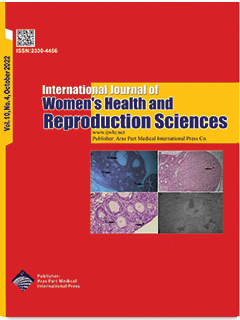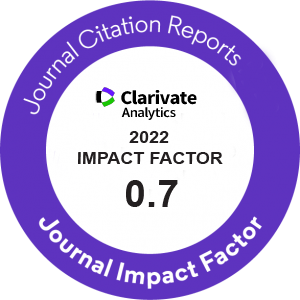
| Original Article | |
| Experience in the Application of Non-invasive Prenatal Screening for the Detection of Down Syndrome in Russia: A Retrospective Cohort Study | |
| Elena V. Kudryavtseva1, Vladislav V Kovalev1, Igor I Baranov2, Andrew A Dektyarev3 | |
| 1Ural State Medical University, department of Obstetrics and Gynecology, Transfusiology, Ekaterinburg, Russian Federation 2National Medical Research Center, Obstetrics, Gynecology, and Perinatology the name of Academician V.I. Kulakov, Moscow, Russian Federation 3Clinical Institute of Reproductive Medicine, Ekaterinburg, Russian Federation |
|
|
IJWHR 2022; 10: 180-185 DOI: 10.15296/ijwhr.2022.31 Viewed : 1779 times Downloaded : 1211 times. Keywords : NIPT, Non-invasive prenatal screening, Prenatal diagnosis, Down syndrome, Trisomy 21, Prenatal care, Genetic screening |
|
| Full Text(PDF) | Related Articles | |
| Abstract | |
Objectives: Assessment the effectiveness of non-invasive prenatal screening (NIPS) for identifying pregnant women at high risk of giving birth to a child with Down syndrome. Materials and Methods: The retrospective cohort study included 25798 pregnant women who underwent NIPS in Russia from January 2013 to December 2018. 21 042 and 4756 participants underwent tests from the Natera laboratory, USA (non-invasive prenatal test 1, NIPT-1) and the Genomed laboratory, Russia (non-invasive prenatal test 2, NIPT-2), respectively. Results: A high risk of trisomy 21 (T21) was detected in 544 cases (2.59%). The mean age in women at high risk of T21 was 37.3 years. According to the NIPT results, in patients who revealed a low risk of T21, the mean age was 33.8 years (P < 0.001). In 535 cases, invasive prenatal diagnosis was performed. In 7 (1.3%) cases, the presence of T21 in the fetus was not confirmed. In 528 (97.3%) cases, T21 was confirmed by fetal karyotyping. Among women who revealed a low risk of T21 (N = 25 086), in 4 cases (0.015%), fetal trisomy 21 was missed. Thus, the indicators of the effectiveness of NIPS in Russia in relation to T21 are as follows: sensitivity - 99.25%, specificity - 99.96%, PPV - 98.7%, NPV - 99.98%. In the first trimester, in the presence of fetal T21, the level of the fetal fraction of free-DNA is significantly lower. Conclusions: NIPS has good prospects for implementation in pregnancy management programs and increasing the effectiveness of prenatal detection of T21. The level of the fetal fraction is associated with the presence of fetal T21. |
Cite By, Google Scholar
Google Scholar
PubMed
Online Submission System
 IJWHR ENDNOTE ® Style
IJWHR ENDNOTE ® Style
 Tutorials
Tutorials
 Publication Charge
Women's Reproductive Health Research Center
About Journal
Publication Charge
Women's Reproductive Health Research Center
About Journal
Aras Part Medical International Press Editor-in-Chief
Arash Khaki
Mertihan Kurdoglu Deputy Editor
Zafer Akan






















